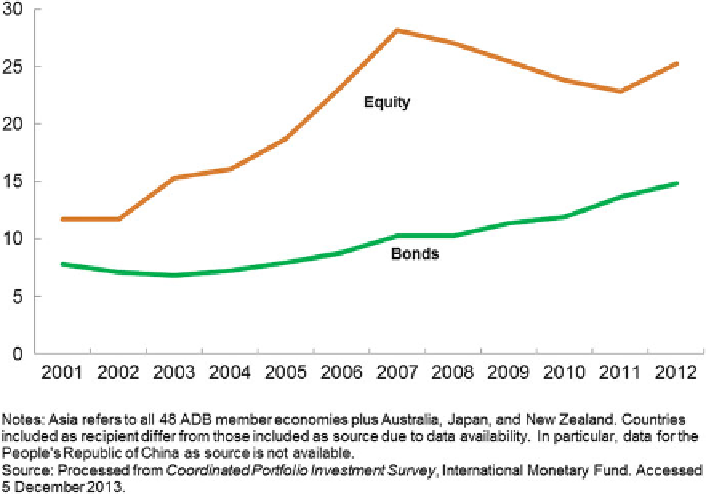Geoscience Reference
In-Depth Information
Fig. 9.4
Intra-Asian portfolio investment
Proposition 3
Risk sharing is another possible benefit of integration; unfortunately,
there is little empirical evidence that it happens.
Intuitively, risk sharing through integration makes sense. But many empirical
studies show integration has a limited effect on the degree of risk sharing. Since the
work of Backus et al. (
1992
), there have been several studies examining the
presence of full risk sharing using cross-country income and consumption
correlations. Most of them found that perfect risk sharing does not happen. Asia
is no exception. Given an idiosyncratic shock, risk sharing was neither strong, nor
did it improve.
What causes this mismatch? Based on numerous cross-country studies, it could
stem from several factors, ranging from using domestic equity markets as a major
source of finance (French and Poterba
1991
), to time horizon and measurement
errors (Canova and Ravn
1996
), to consumption endowment uncertainty (Obstfeld
1994
; Mendoza
1995
), to the limited size of capital flows and higher sovereign
default (Bai and Zhang
2005
).
The effect of financial integration on economic growth has been well
documented—more so than the effect of integration on risk sharing (Levine
2001
). Theoretically, the consumption growth rate in integrating countries will be
cross-sectionally independent of idiosyncratic variables as financial integration
increases (Cochrane
1991
). The key factor is greater insurance. If inter-regional
or international capital markets are well integrated, countries can insure against

